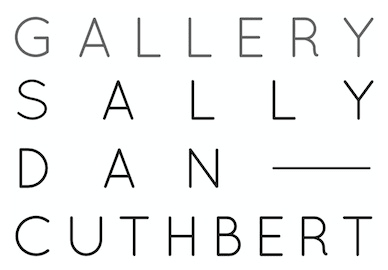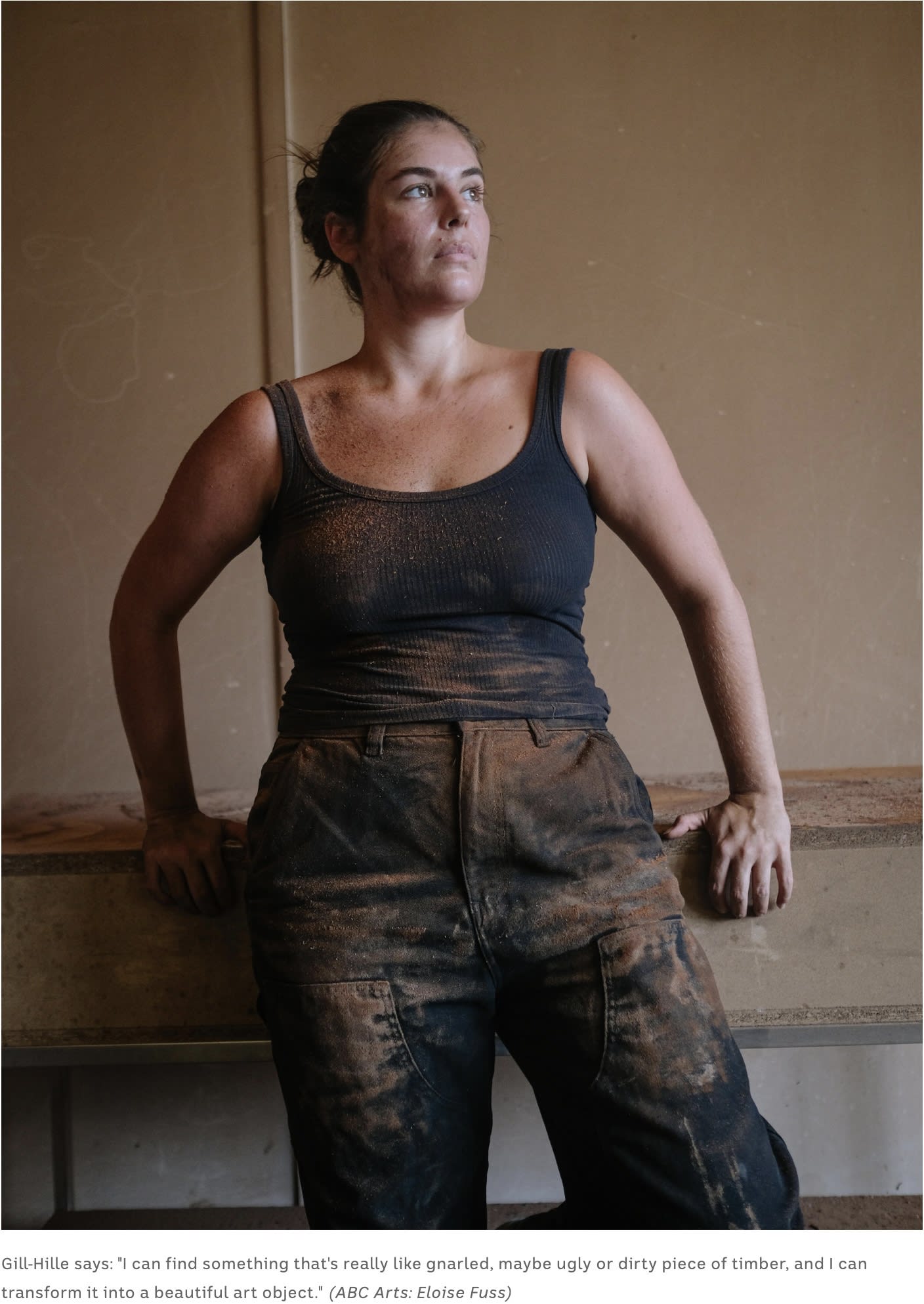

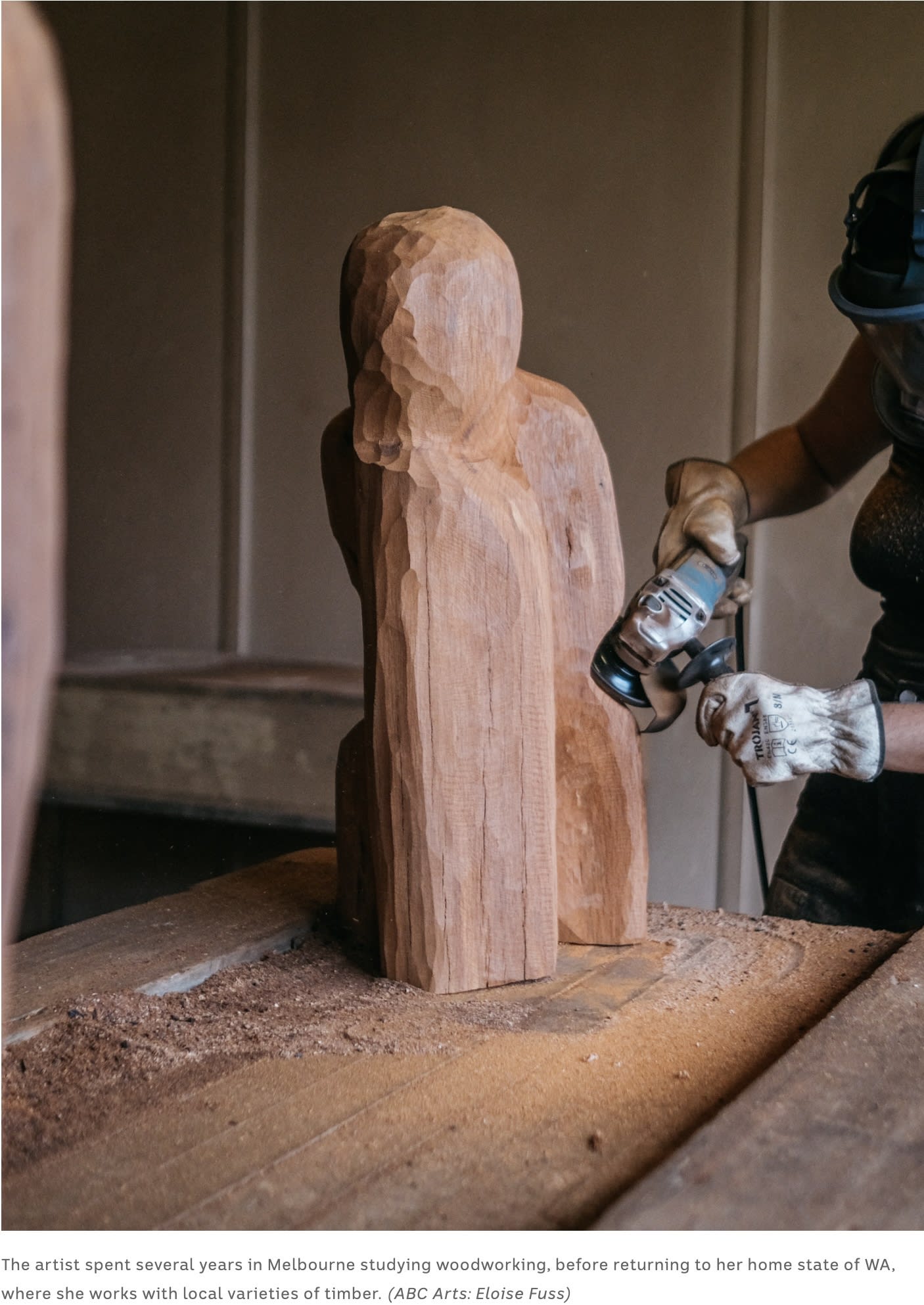
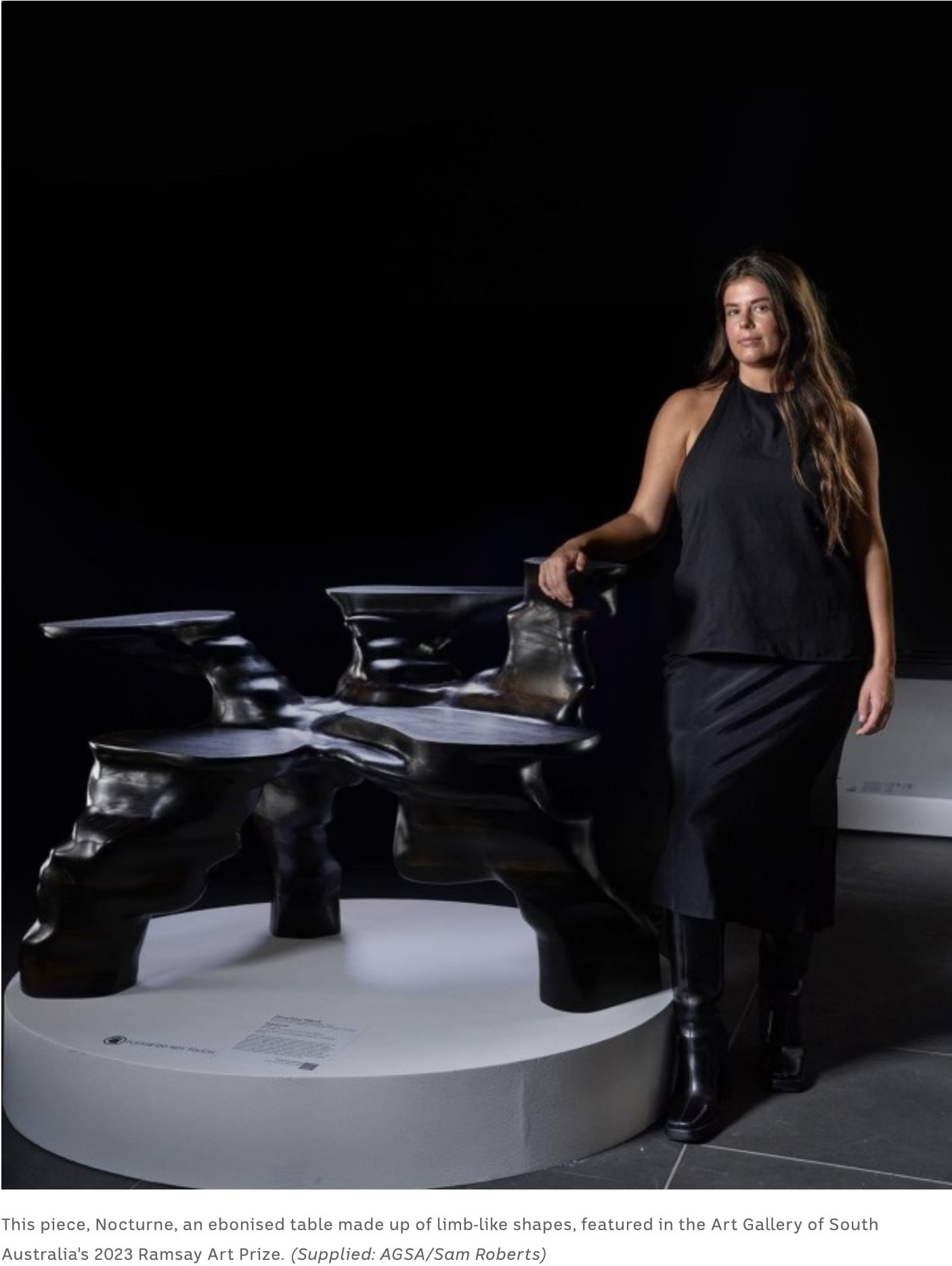
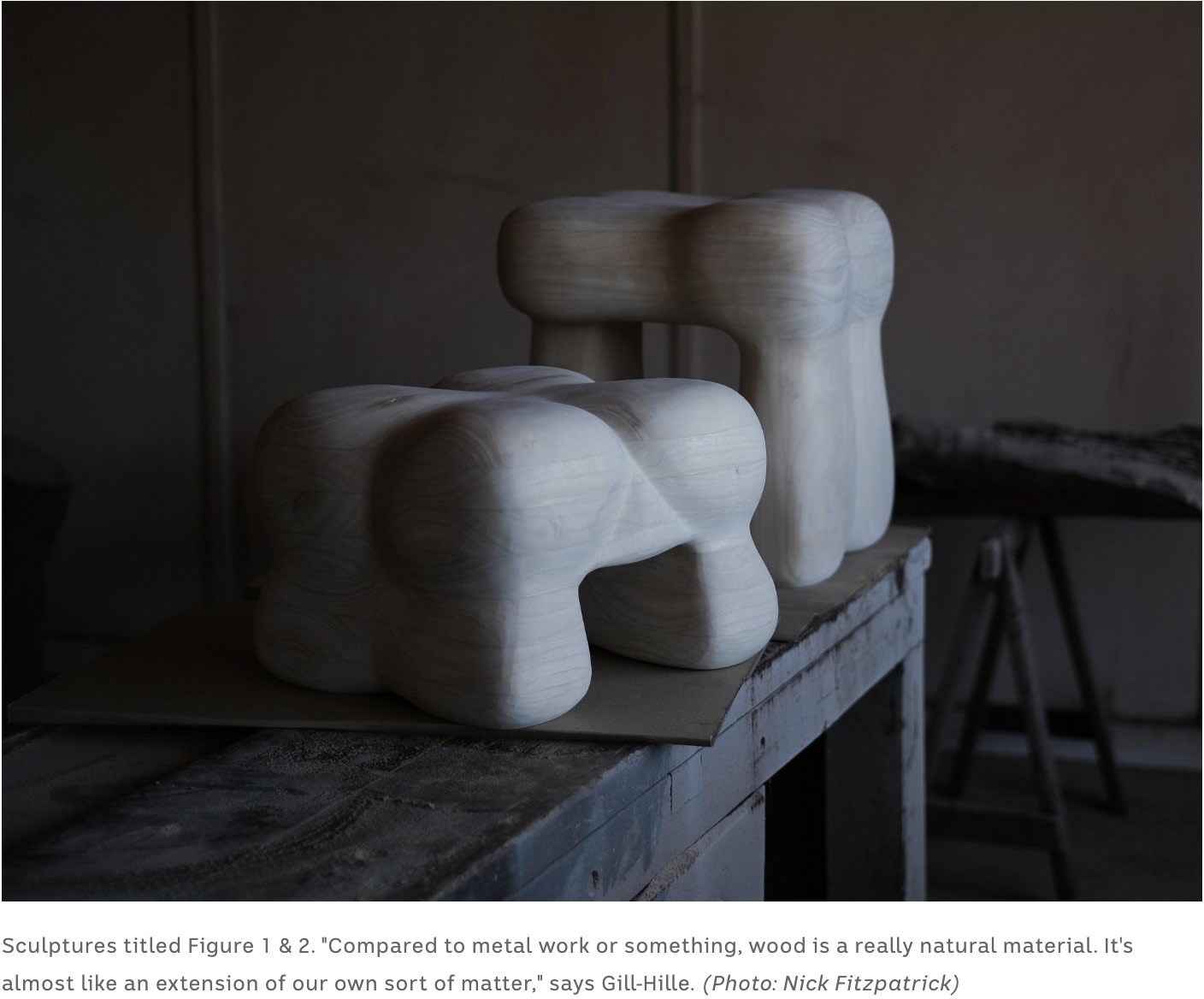
"I feel like it's, almost in a funny way, made of the same sort of natural material — it has been an alive thing."
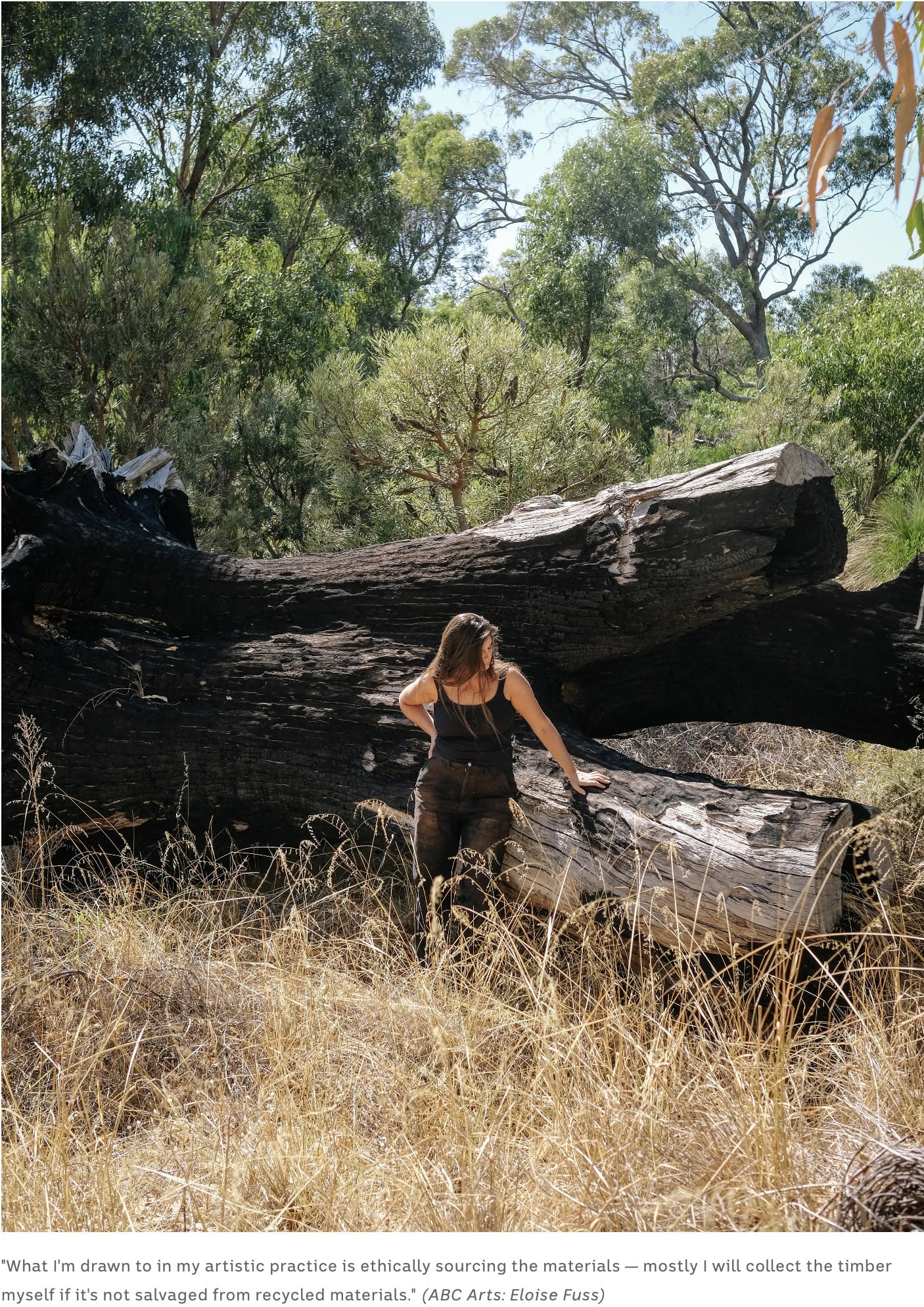
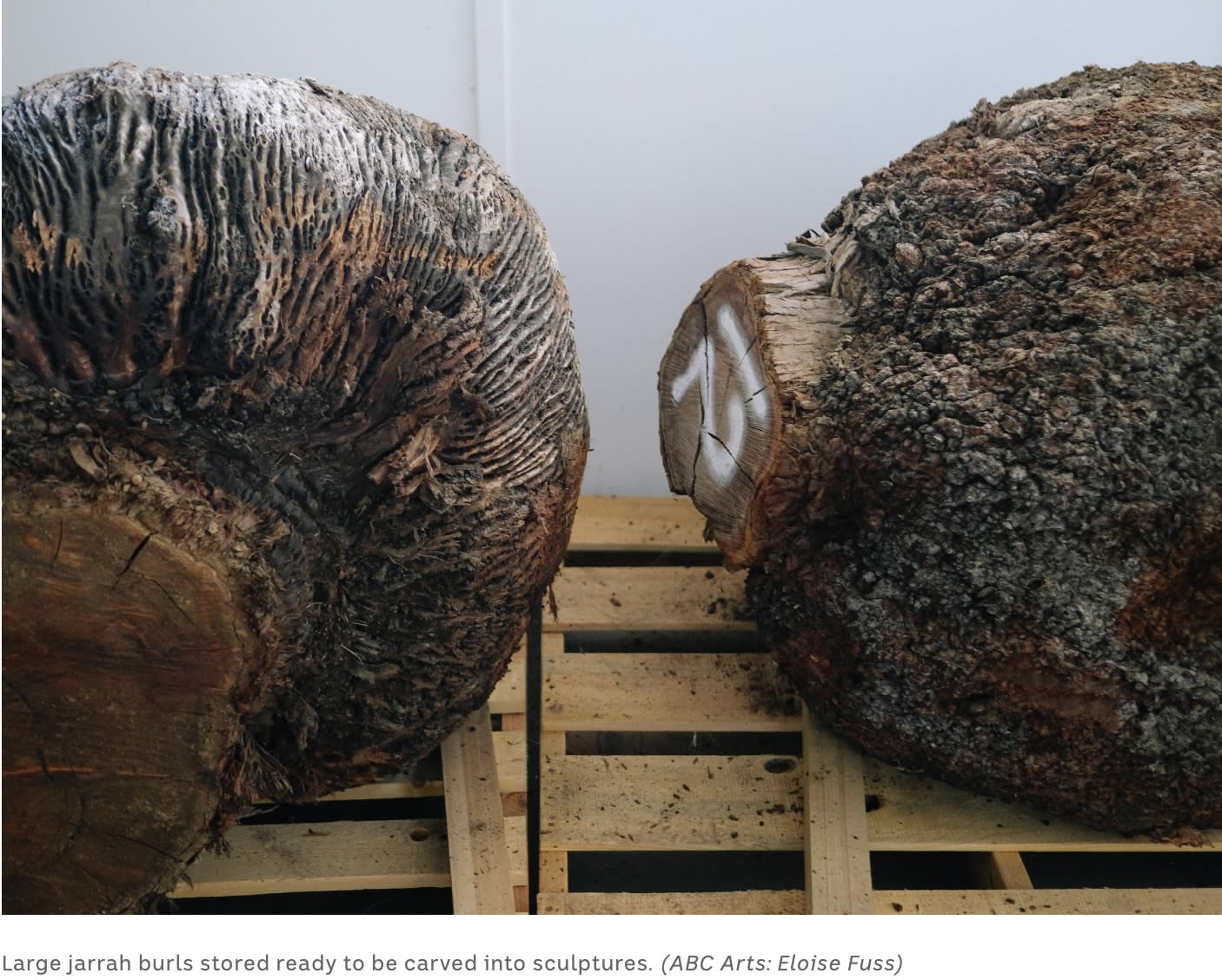
Gill-Hille mainly works with ethically sourced, native Australian hardwoods. She never cuts a living tree down, instead working with what she calls "roadkill timber". "So it's a timber that has already died, it's already started the process of releasing the oxygen and it's already started sort of curing. "It isn't so green that I can't use it, but also isn't habitat and taken by animals and bugs, white ants or whatever. It's about finding this sort of special area in between."
Mostly she works with eucalyptus varieties endemic to WA, like jarrah, karri and tuart, a "blondish timber", which Gill-Hille says she loves but is hard to find. "And I love she-oak — that's a really beautiful timber with quite amazing grain," she says. "But they're all Western Australian timbers that I source myself through farmland, that have trees that have needed chopping down, or have fallen down in bushfires on properties."

The process of working with the wood varies. Sometimes, Gill-Hille begins with a watercolour sketch, mapping out highly planned sculptural forms. Other times, she's working more freehand, guided by the shape and characteristics of a particular piece of timber.
"Sometimes it might just be from finding a piece of wood that speaks to me in a certain way, and approaching it, just carving it and letting the timber direct me as to what's going to happen," she says. "It might be particular grains, it might be particular bits of forms in the timber that direct me in a certain way. "Sometimes it's a very intuitive process and other times it requires more thought and a little bit more planning."

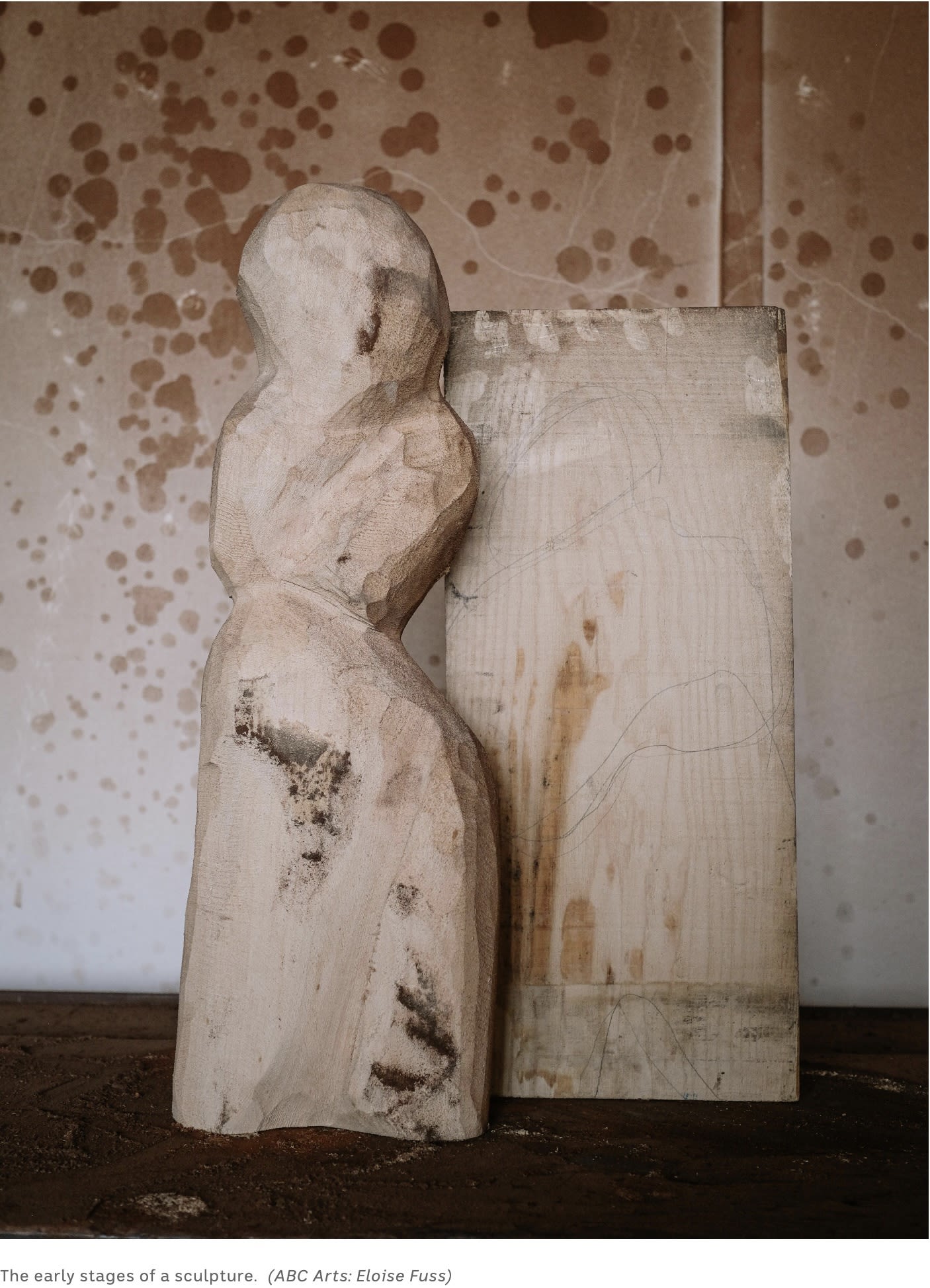
While Gill-Hille's sculptures appear fluid, creating them is a highly laborious and time-consuming process. Carving the wood, she's constantly moving her body and switching angles, using an array of tools — from chainsaws, to wood-carving bits on angle grinders, gouges and chisels.
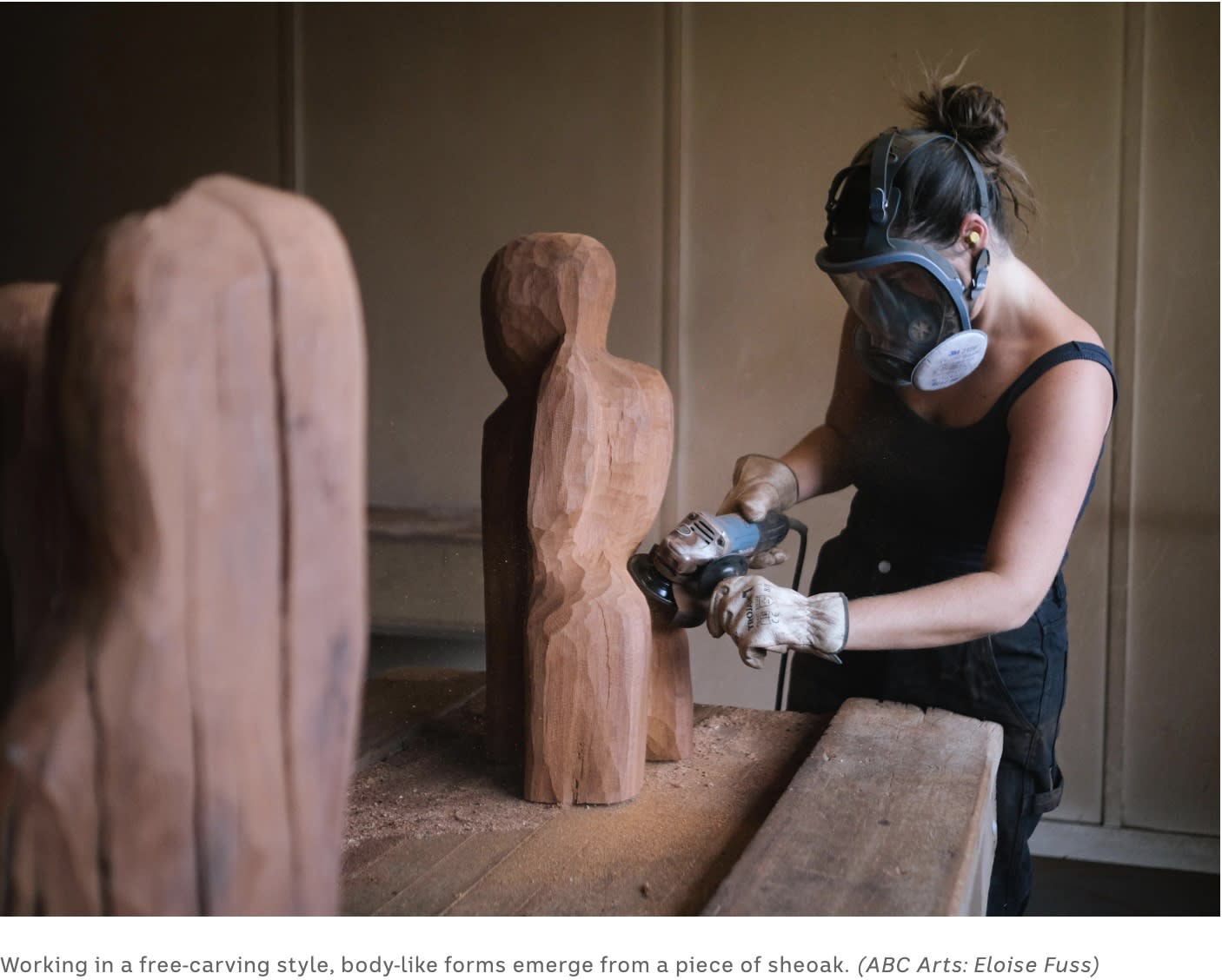
But the carving is only about a third of the process. Once the rough shape is there and the artwork begins to emerge, there comes endless hours of sanding. "It's 10, 20, hundreds of hours of sanding, sometimes in the same position, doing the same thing over and over for hours," Gill-Hille explains. "That is the really arduous, laborious part of the process. In lots of ways, I think that I go through phases of kind of loathing it and then other times where I love it. "When I say it's like self-portraiture, it's me putting myself into the work in a visual sense, there's also blood, sweat and tears in the work for sure."
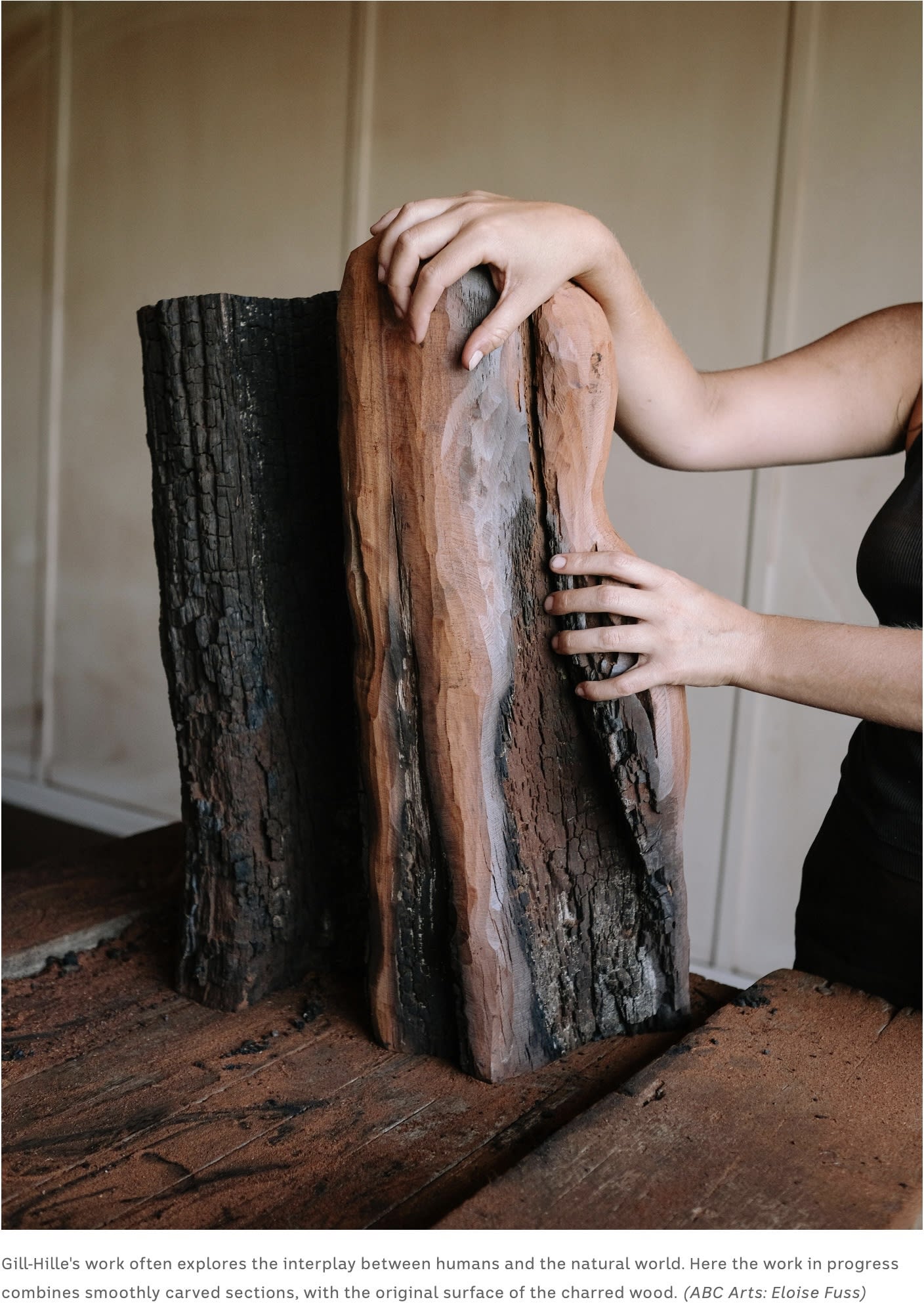

Woodworking has now become a very intuitive process for Gill-Hille, but it hasn't always been this way. A "naturally cautious person", Gill-Hille says she was extremely timid and nervous when she first began working with the tools during her furniture-making studies in Melbourne in the mid-10s. While it didn't take her long to become "obsessed" with the workshop, she says the residual caution now serves her well.

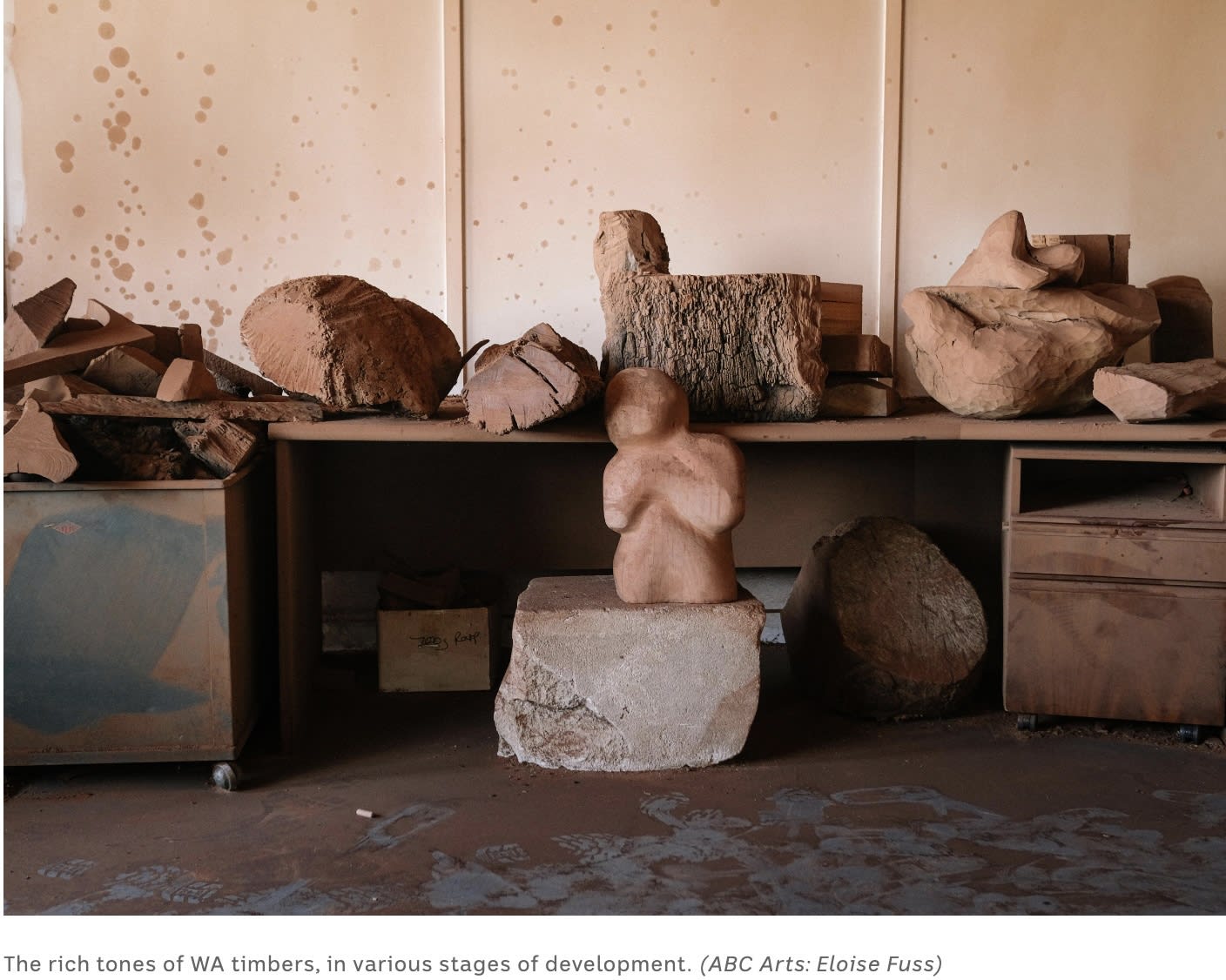
"I think it's like driving a car, or like people that surf, if you lose caution completely, it's when accidents happen … the truth is the tools are dangerous," she says. "Being cautious and confident at the same time is important, but being arrogant or thinking that they're just there to serve you is not. Bad things can happen … I had almost all my lecturers at furniture design school missing digits!" But, for Gill-Hille, the most insidious risk of this work is that fine red wood dust that moves through the air and coats the space. "Because of the type of work I do, where it's free carving, it's actually really hard to have any sort of extraction of the dust … that's why I use the safety equipment like respirators," says Gill-Hille. "As much as I want my fingers and eyes, protecting my lungs is definitely the bit I care about the most."

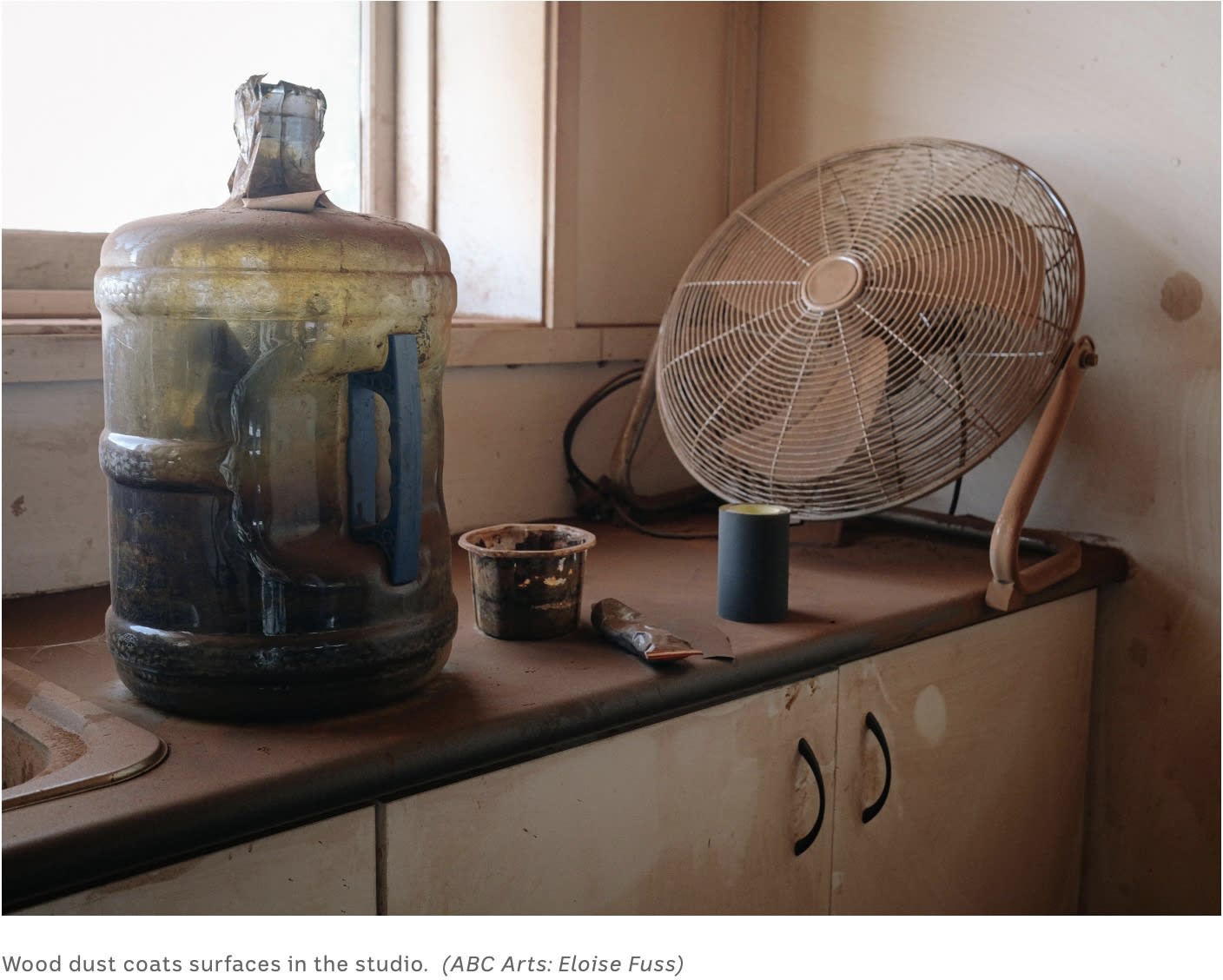
Respirator and mask removed, tools switched off, Gille-Hille gets ready to head off — checking the blokes in the woodworking factory next to her have left for the day. Her work is intentionally connected to life and the environment of WA, but she reflects that working away from the bustle and momentum of bigger cities and their art scenes means you have to be self-motivated and "really passionate about the work you're making".
Tanned from the dusty remnants of her work day, Gill-Hille's complete investment in her unique approach to this art form is clear. "I think there is something really rewarding about this particular practice. I can find something that's a really gnarled, ugly or dirty piece of timber, and I can transform it into a beautiful art object," she says. "I think that has been really rewarding in the practice, to see things go through such transformation at my hands … sometimes there is a moment where I step back, and I'm like, wow, I made that."



